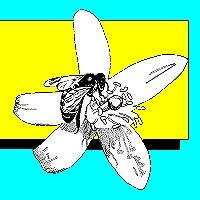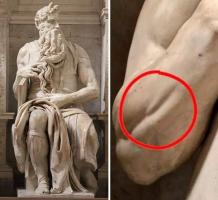APIS Volume 6, Number 12, December 1988

In this issue
- Florida's Bee Law: Chapter 586
- Negotiated Rule Making: Historical Only
- More on Aldicarb: Recommendations
- 1988 Year in Review
NEW RULES TO GO INTO EFFECT
[Editor's note: The following rules are put into effect pursuant to Florida Law Chapter 586. (See April 1988 APIS]
The Division of Plant Industry will institute new regulations concerning beekeeping around the first week of December. Information on the new rules should be mailed to those already on the Division of Plant Industry's list by mid-December. Highlights include mandatory registration of beekeepers, followed by inspection. From now on beekeepers will have to brand every colony or mark it permanently. Generally, the bee inspector will issue a FLO (a Florida number recognized for each county), although other identification already in use will be "grandfathered" in.
The Division will tag abandoned hives (those not branded or marked) for 90 days. If not claimed, they will be moved to a holding yard for 90 days to six months. After that, they will be donated to research or a non-profit organization, such as the Florida State Beekeepers Association. Contact your local bee inspector or the State Apiarist for details.
NEGOTIATED RULEMAKING RESULTS IN CONCENSUS
[Editor's note: Included for historical purposes. This was very quickly abandoned and is no longer in force.]
A group of industry personnel tried the concept of negotiated rule making in Washington, DC. The session was productive according to observers. It was convened by USDA-APHIS to produce a national Varroa mite movement quarantine. The orderly movement of honey bees was reached as an overall goal. The results will soon be given to participants, in the form of minutes, for their comments. The final rule is expected to soon be published in the Federal Register.
A highlight of the rule, according to Mr. Laurence Cutts, is that beekeepers will be allowed to treat and move into many states. Once fluvalinate strips are introduced to colonies, they can be moved after 14 days, and the strips can remain on the colonies during movement. Individual states will have to allow interstate movement. When colonies are placed inside a state, however, they will come under state, not federal, regulations. In addition, the rule is only for Varroa. Tracheal mite or American foulbrood certification can still be invoked to disallow movement. The beekeeper must continually keep track of the situation in any state to which a move is contemplated.
ALDICARB RECOMMENDATION
A recent letter sent by Agriculture Commissioner Conner concerns a recommendation on managing aldicarb applications in bedded citrus groves. It is the result of several meetings and consultations with IFAS, commercial honey producers, Indian River Citrus League, Department of Citrus, Citrus Mutual and the bureaus of Apiary Inspection, Chemistry and Pesticides.
The text follows:
Concern has been voiced primarily from certain beekeepers and citrus growers in Florida's east coast bedded citrus regions. Studies by IFAS comparing peak concentrations of aldicarb in citrus nectar from ridge and bedded citrus growing areas found significant concentrations in nectar collected from certain bedded citrus groves but not from other areas. More studies are necessary to confirm these preliminary findings and to determine why some citrus culture practices might produce aldicarb residues in nectar while most other methods do not. Aldicarb residues have not been found in any honey samples analyzed by the department (Florida's Department of Agriculture and Consumer Services); however, honey produced in targeted bedded citrus groves will be collected and analyzed next year.
Based on discussions of relevant data with IFAS and industry representatives and on staff recommendations, I (Commissioner Conner) am requesting that you convey my recommendations to IFAS Extension Citrus Specialists. This information should be distributed prior to the 1989-90 growing season through the following statement:
"To reduce a possible hazard to honey bees in bedded citrus groves, Commissioner Conner recommends that commercial hives should not be placed in citrus groves or blocks which have been treated with Temik 15G during bloom or within 25 days of inception of bloom. In most areas of Florida, this time period generally corresponds to February 10 through March 20. Growers and commercial applicators are asked to use their best judgement in their particular locales. Specific information can be obtained from their local Extension Citrus Specialist."
Dr. J.L. Knapp, IFAS Citrus IPM Specialist, distributed the above to all citrus county agents through the IFAS computer network on December 13, 1988. REMEMBER: This recommendation is only issued for bedded groves. All beekeepers planning to locate hives in citrus should communicate their concerns about aldicarb with grove owners/managers. See back issues of APIS as published in the 1988 index for more detailed information.
[Editor's note: For more on aldicarb see January 1988 APIS no2
1988 IN REVIEW
Another year has passed. This is the seventy-first consecutive edition of APIS, first published in February, 1983. A look back through 1988 issues shows that the Varroa mite, as it should, got the most ink. The following is a monthly index of the most important articles:
- January -- Section 18 Label Approved for Fluvalinate, Research on the Honey Bee/Aldicarb Connection, Aldicarb Repellency, Numbers and Pesticide Perspectives.
- February -- Unexplained Bee Dieoff revisted.
- March -- Fluvalinate Section 18 Rescinded, Providing Water to Bees, Bee Dieoff Continues, Honey Board Activity, Bee Larvae and Pesticides.
- April -- Swarm Control, National Movement Quarantine for Varroa, Proposed Florida Rule on Honey Bees.
- May -- National Movement Quarantine Revoked, Alchemy of Greed, More on Providing Water.
- June -- Task Force Deliberations on Varroa, On Developing Thresholds for Varroa, Bees in Citrus.
- July -- A Focus on Marketing.
- August -- Panhandle Feeding Study, More on Aldicarb, The Big Pesticide Picture: History of Resistance.
- September -- Using the Honey Refractometer, Drying Honey, Marking and Clipping Queens.
- October -- Check for Pollen in the Fall, More on Exporting Honey: Exporting.
- November -- Varroa Video Released, Menthol Crystals and Tracheal Mite Control.
Sincerely,
Malcolm T. Sanford
Bldg 970, Box 110620
University of Florida
Gainesville, FL 32611-0620
Phone (352) 392-1801, Ext. 143 FAX: (352)-392-0190
http://www.ifas.ufl.edu/~mts/apishtm/apis.htm
INTERNET Address: MTS@GNV.IFAS.UFL.EDU
©1988 M.T. Sanford "All Rights Reserved

















